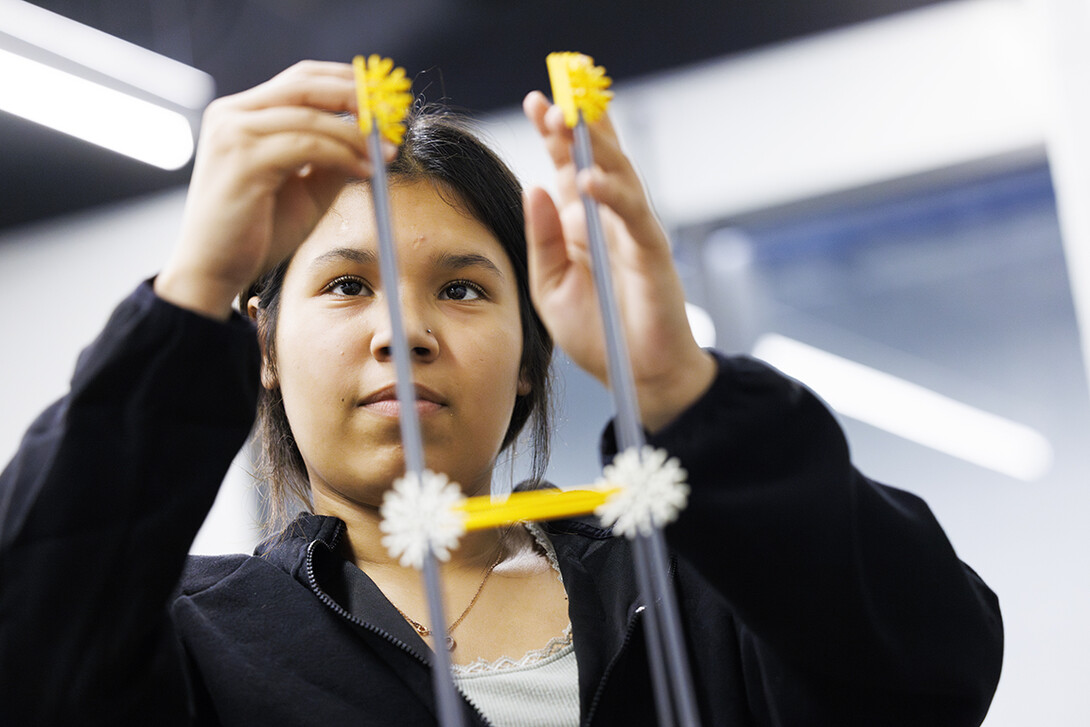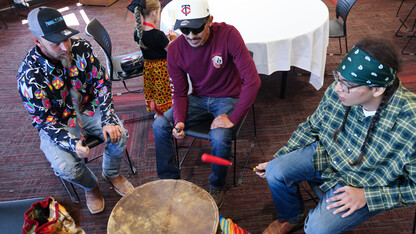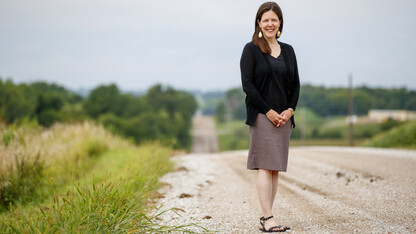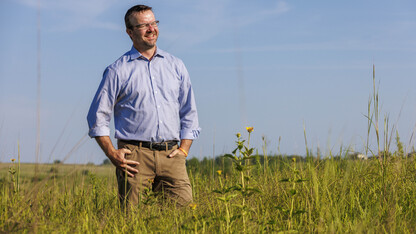
A camp this week at the University of Nebraska–Lincoln showed high school students how science and math is everywhere they look, and how they could be part of influencing the world around them in the future.
Mid-America Transportation Center’s Sovereign Native Youth STEM Leadership Academy connected high school students to a range of engineering concepts, including structural engineering and materials science. More than 20 students spent five days on campus engaging in hands-on STEM demonstrations, presentations and social activities.
“The types of questions some of them are asking predict future seeds of engineers,” said Ezzat Haider, education and outreach program manager for the Mid-America Transportation Center. “I believe this program will give opportunity and hope to some of these students.”
Around 70% of the students are Native American and they had the opportunity during the week to hear from some Native American faculty, students and professionals.
During a session on Monday, Christine Wittich, assistant professor in civil and environmental engineering, walked a group of students through some basics of civil and structural engineering. Using a shake table, Wittich demonstrated ways to make buildings more stable and resistant to damage from things like flooding, tornadoes or even being hit by a car.
“We don’t know what events are going to happen, so we have to assume we’re going to have damage,” she said. “We want to make sure we plan where that damage can happen so we prevent collapse. If we prevent collapse, even if the building is entirely unusable, at least the people can escape safely.”
Students then designed their own structures and tested them on the shake table to observe the sway. Wittich explained to the students why their building displayed more or less movement than her test structure. Wittich also told the students that while an interest in subjects like physics and math can be helpful in her field, there’s also more to it than that.
“If you have a passion for wanting to make your community safer, for wanting to make any homes, schools, buildings, grain bins that we interact with every day safe for anything it could encounter along its lifespan, then structural engineering is definitely a field where we need a lot of creative minds,” Wittich said.

Mida DeAnda, a rising junior from Niobrara, Nebraska, said in another session she and other participants had designed a road surface using materials like asphalt, soil and rock. Students were tasked with creating a surface that was cost effective but also would withstand traffic.
“Asphalt is really expensive, so for my group we put barely any asphalt, and we put more soil,” DeAnda, “Also we put plastic in our soil.”
DeAnda was participating in the camp for the third year and said she enjoyed the activities and learning about engineering, but also connecting with other people.
“I like hearing people’s stories, especially Native American stories,” she said. “I love hearing that, having them show us new things and also meeting new friends.”

Haider said using hands-on activities to demonstrate various engineering fields gives the students a better idea of their interest, and which area might be the best fit for them. He watches the students’ enthusiasm grow as the week progresses.
“I saw it spark something that those students might consider in the importance of completing their education,” Haider said.
Additionally, Haider said students open up over the course of the week, and the activities lend themselves to getting more involved and exploring their curiosity further.
“(At first) they stayed in their chairs hesitant, but when they started to, as a small group, build their projects, they came to another level,” he said. “It’s not only the theoretical part, now they’re participating.”
Haider said bringing the students to campus and getting them involved with activities and members of the community can start building future engineers and future leaders.
“No matter if they want to be engineers or teachers or whatever, those basic skills will be helping them make more progress,” he said.







